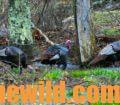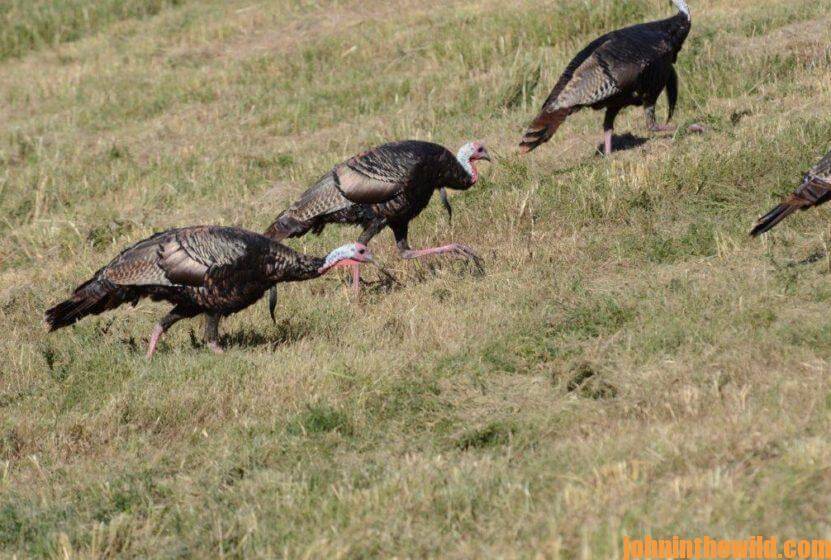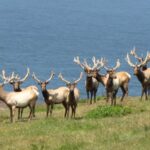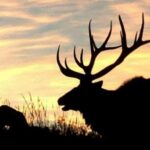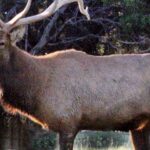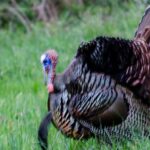Editor’s Note: Joe Drake from Fortson, Georgia, first started hunting turkeys in 1979 and began entering turkey calling contests in 1981. He has been guiding hunters to turkeys since 1985. He won the World Turkey Calling Championship in 1987. He’s won three national championships, one US Open Championship, eight Georgia State Turkey Calling Championships, seven Southern Open Titles and several other state championships.
 For many years, my home state of Georgia didn’t have a turkey season, but a few counties in Alabama – the state next door to us – did. So, I hunted in Alabama for a year or two back in the mid-1970s. Finally, Georgia had a turkey season. Since the flocks had been allowed to rebuild because of the closed seasons, when I first started hunting turkeys in Georgia, there were plenty of turkeys in all the places we hunted. At the time, I knew a retired colonel in Fort Benning, Georgia, who hunted turkeys. However, he refused to tell me or any other turkey hunter how to hunt or even call turkeys. A farming friend of mine had an uncle who hunted turkeys, but he wouldn’t tell us anything either about how to hunt them. Some friends and I did find out that the way you were supposed to call turkeys was to go to where you thought turkeys might be and yelp three times. If a turkey gobbled, you should sit down, yelp three more times, and then put the box call out of your reach.
For many years, my home state of Georgia didn’t have a turkey season, but a few counties in Alabama – the state next door to us – did. So, I hunted in Alabama for a year or two back in the mid-1970s. Finally, Georgia had a turkey season. Since the flocks had been allowed to rebuild because of the closed seasons, when I first started hunting turkeys in Georgia, there were plenty of turkeys in all the places we hunted. At the time, I knew a retired colonel in Fort Benning, Georgia, who hunted turkeys. However, he refused to tell me or any other turkey hunter how to hunt or even call turkeys. A farming friend of mine had an uncle who hunted turkeys, but he wouldn’t tell us anything either about how to hunt them. Some friends and I did find out that the way you were supposed to call turkeys was to go to where you thought turkeys might be and yelp three times. If a turkey gobbled, you should sit down, yelp three more times, and then put the box call out of your reach.
When someone asks me how many turkeys I’ve killed, I say that I’ve been responsible for about 20 turkeys a year being harvested since 1985. That’s because I guide in several states – generally 10 days in Wyoming, and I guide for friends and family in Georgia and in Alabama. I’ve called in more turkeys for other hunters to take than I’ve taken myself. For me, the big advantage of being a turkey-hunting guide is the fact that I don’t have to stop turkey hunting when I’ve taken my limit of gobblers. I can continue to hunt and call turkeys for other hunters until the end of the season.
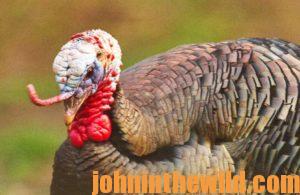 Hardhead – One of the Toughest Turkeys Ever
Hardhead – One of the Toughest Turkeys Ever
This turkey was hunted every day of the season. If I wasn’t hunting him, one of my buddies was, and soon others were as well. My son, my wife and I were hunting together one morning and filming the hunt. We stopped at an area where we had most often heard Hardhead, and I couldn’t believe what happened next. Hardhead came into our calling just as eagerly as a 2-year-old gobbler would at the beginning of the hunting season after never being called. As he approached, we gave him some soft calling, clucking, purring and yelping, and then he saw the decoy. My son kept filming as my wife shot Hardhead. We’d hunted that turkey 15 times at least, and Hardhead had been successful every time and beat us – until that last hunt. I think the only reason that Hardhead came to us was due to the fact that the time was late in the season. I believe that all of Hardhead’s hens were sitting on the nest. We hadn’t started calling him until late morning.
* What I Learned from Hardhead:
a) I knew where to find Hardhead, even though I hadn’t been able to call him in for the taking after hunting him for 15 days.
b) Your best chances for taking a bad bird that had had a lot of hunting pressure was usually during the end of the season when all of his hens had left him by midmorning to sit on their nests.
c) Once I started working a bad bird, I needed to switch to soft calling and/or scratching in the leaves to call him.
d) A bad bird could be taken if you hunted him at the right time during turkey season.
 The State-Line Gobbler
The State-Line Gobbler
The Chattahoochee River is the boundary line between the states of Georgia and Alabama. We were hunting a bird on the Georgia side of the river, while another gobbler was gobbling, strutting and drumming on the Alabama side of the Chattahoochee River. Whenever I yelped, the Alabama turkey would start gobbling. On the fifth morning of the hunt, I yelped at the turkey, and he hushed without gobbling at all. This was the first time that bird hadn’t gobbled when I called, and I turned my head to see that gobbler in the air, flying across the Chattahoochee River. The turkey landed on a sandbar at the edge of the river, near where I was. That State-Line Gobbler walked up the sandbar and came straight to me. I took him.
* What I Learned from the State-Line Gobbler:
a) This bird was on a spot we called, Turkey Island. Many turkeys stayed on that island, but none of the gobblers were as responsive as this boss gobbler was. However, I never considered the possibility of this gobbler flying the river that was 100-yards wide.
b) I think this gobbler flew over the river because every time I called out, I sounded like a hen that really wanted to mate. Maybe the turkey thought, “If I don’t get to that hen quickly, some other gobbler is going to her and breed her.”
c) You never know what a turkey will do. Just because you’re trying to take a turkey on one side of a river doesn’t mean that a turkey on the other side of the river won’t be susceptible to your calls.
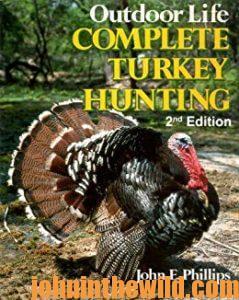 To learn more about turkey hunting, check out John E. Phillips’s book, “Outdoor Life’s Complete Turkey Hunting,” at https://www.amazon.com/gp/product/B00IXXJWOQ/ref=dbs_a_def_rwt_hsch_vapi_taft_p2_i10
To learn more about turkey hunting, check out John E. Phillips’s book, “Outdoor Life’s Complete Turkey Hunting,” at https://www.amazon.com/gp/product/B00IXXJWOQ/ref=dbs_a_def_rwt_hsch_vapi_taft_p2_i10
available in Kindle and print. You may have to cut and paste this link into your browser. (When you click on this book, notice on the left where Amazon says you can read 10% of this book for free). To learn more about other turkey books by John E. Phillips, go to www.amazon.com/author/johnephillips.
Tomorrow: Joe Drake Hunts a Turkey Across an Ice Water Creek and Gets Wet to Retrieve Him


